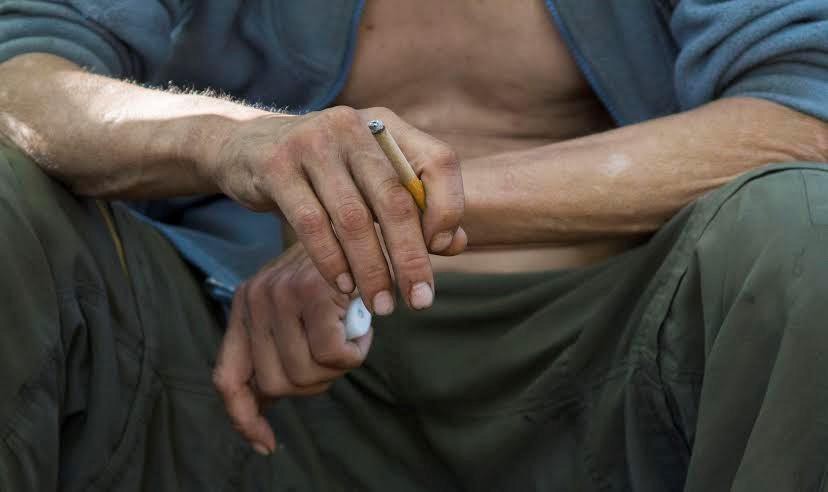‘Five Chapters’ exhibits artists’ photography, transition from college life

GVL / Courtesy – gvsu.edu Image by Kasey Reno
Nov 27, 2017
As seniors at Grand Valley State University select their classes for the final time, the oncoming steps of a new life become a reality, shifting students into the professional world. For photography students Jordan Barnett, Sean Barr, J.J. Butts, Brittany Patrosso and Kasey Reno, these transitions are captured through their own lens in the “Five Chapters: Photography Senior Thesis Exhibition.”
The exhibit, which will take place weekdays in the Thomas J. and Marcia J. Haas Center for Performing Arts starting Tuesday, Nov. 28, is all about growth and the beginning of a new chapter in the lives of graduating students, Barr said. Open until Saturday, Dec. 9, the day of the students’ graduation, each portion of the exhibit aims to highlight the photographers’ theses differently.
“The thesis is a completely open project, so we all come up with our own ideas,” Barr said.
Barr said that with the immense freedom in creating a thesis project, each artist took different liberties. Barr, along with some of the other artists, took the opportunity to try a new form of photography for their final project.
“Some people have stepped out of their comfort zone; I know I did,” he said. “Mine are nighttime photos, and I usually don’t shoot at night at all. Before this semester, I actually don’t recall ever shooting at night.”
For Patrosso, she kept her series within an area of comfort, instead focusing on depth and mastering portrait photography.
“Portrait photography is what I’ve loved to do throughout my photography career at Grand Valley,” Patrosso said. “I really like taking pictures of people, so I knew that for my last project at Grand Valley I wanted to do something that I really enjoyed.”
The flexibility of the thesis is critical in nature due to the vagueness of the prompt. The thesis class motives the flow of ideas, Patrosso said, but there is an intense individual dialogue in exactly how to share those ideas.
“It took me about six months to a year to figure out what I wanted to do, so I thought about it quite a bit,” Patrosso said. “Just throughout this semester, we’ve done a lot of preparation individually and as a class about how to best showcase our projects and how to hone our ideas.”
Once those ideas are sifted through, the project is set and the thesis students spend their semester working toward a final product. Patrosso’s project, titled “Strength,” is her testament to the women around her, she said.
“All of my photographs are portraits of women, whether they’re people in my life, people that are related to me, or my classmates that I took photographs of,” Patrosso said. “It’s highlighting things that they used to be insecure about that they now love about themselves, or just showcasing their strength as a woman.”
While working on her thesis project, Reno said she was able to make some lasting memories through her interviews and documentary photography. While working with the Salvation Army to explore homelessness, her conversation with a man nicknamed Waldo, who one day received $100, taught her a lesson about humility, she said.
“Waldo was like, ‘Do you want to know what I did with that money?’” Reno said. “‘I went to Big Boy and I bought myself breakfast. … (Then), I went and I did my laundry.’ Waldo valued the little things that I take for granted. I was like, ‘Holy crap. Go, Waldo!’”
Reno spent plenty of time this semester working with the Salvation Army to conduct interviews with the homeless and “capture the environments they call home.” Taking photos and preparing pieces for the exhibit is no easy task, Reno said, with this final project being a huge time commitment for the photographers.
“I spent eight hours printing; I then spent 12 hours matting and framing everything,” Reno said. “To photograph, I went out every Friday this entire semester and met people three hours at a time.”
Due to the diversity of projects in the exhibition, there are a variety of different goals for each series, ranging from raising money for the Salvation Army for Reno to inspiring confidence for Patrosso. The overarching point is to transport viewers to a different way of viewing the world, Barr said.
“I really hope that with what I’m trying to go for with my statement and my explanation that viewers can relate to the images and get an understanding about what I’m trying to discuss through my images,” Barr said.






















